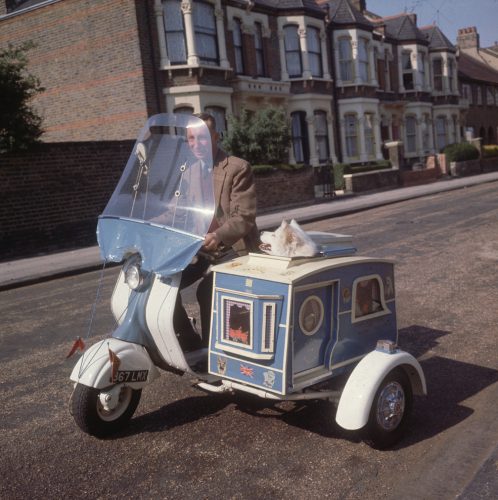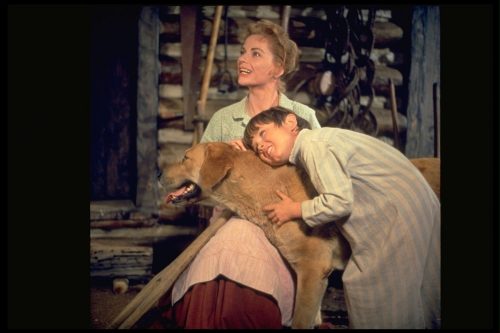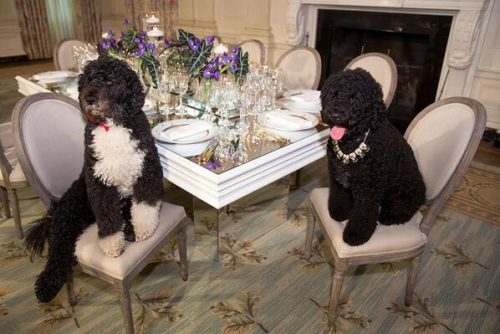It’s been an interesting few weeks since our Chincoteague home went belly up (and with it our plan to pay our debts); my identity as a tenor was shaken; and Sasha tore her ACL. All First World Problems, to be sure, but still unsettling, at best.
The comments that followed last week’s post, the one about Sasha’s torn ACL, brought home to me that the way people look at feel about their pets is both culturally determined and personal. And those comments and some emails I got led me to do some investigating into the bond that forms between humans and their pets. Today, I’ll report on what I’ve learned.
The ancient (culturally based) relationship between wo/man and dog is alive and well.

Culture first
From feral dogs and cats neglected on the streets to an evening meal made of dog meat, perhaps no single cultural difference stands out so dramatically among Returned Peace Corps Volunteers as the ways in which dogs and cats were treated differently in the countries in which we served, while back home, pets have grown into a $60 billion annual industry (not including horses). (The same amount as the weight loss industry)
Our pets have become a $60 billion industry.
According to the U.S. Bureau of Labor Statistics, pet owners spend more on their pets each year then they do on alcohol, men’s and boys’ clothing, or landlines. Pet spending is recession-proof too, as evidenced during our recent economic downturn. Absent a recession, however, spending on pets increases every year.
There’s the cost of food and basic vet services, of course. Then there is pet insurance, beds, clothing (winter and rain coats, sweaters and boots), and car seats. There are ramps and doors and gates; leashes and collars and carriers and crates. Amazon has a page devoted just to the urns and other memorials you can buy for your departed dog.
There are dog treadmills and a device called iFetch that will throw balls for your dog to retrieve (the dog then brings it back, drops it back into this contraption, and out it flies again).
There are pet spas for when you travel and video chat devices (Petchatz, ICpooch, iHeartDogs, and PetCube) so you can talk to your pet while you are away.
There was even a bill introduced in Congress a few years back (a Republican from the midwest) seeking a $3500 tax deduction for each pet.
Yes, we in the western world love our pets.
The human-animal bond is ancient.
Dogs are thought to be the first animal to be domesticated 10,000 to 12,000 years ago, with cats arriving a mere 6,000 years ago. How they surmise these things, I do not know.
In deference to Sasha, we’re focusing on dogs today. We all know the many uses dogs have been bred for: sheep herding, rescue work, drug sniffing, pulling a sled, sentry duty, and serving as guide dogs for hearing-or vision-impaired persons. The Red Cross began using dogs to help search for wounded men on the battlefield during World War I; by World War II, the U.S. Army had followed. And we all know the stories of the dogs who worked at Ground Zero in the aftermath of 9/11.
That’s utility. Task. Function. Purpose.
People owned dogs; dogs worked at whatever they were good at.
Where did the idea of dog as family member arise?
Wondering where the idea of dog as member of the family arose, I Googled it.
Let’s start with a 2015 article from the UK’s The Daily Mail, covering a survey of 1,500 dog owners:
- Nearly nine in ten consider their dog a ‘fully-fledged’ member of the family.
- More than half would be sadder if their dog died than if an uncle, aunt or grandparent passed away.
- Half admit their dog’s needs had influenced major life decisions.
- One in two dog owners believes their pet knows what they are thinking or what mood they are in.
- Two in five share their suppers with their pets.
- A third of Britain’s dogs have their own designated chair in the living room.
- One in four dog owners have given their pet its own social-media profile.
Great Britain’s The Telegraph reports that
… the nation’s mothers-in-law have suffered what could be the worst indignity yet after having their place in family life officially supplanted – by the dog.
That was pretty funny. But then I found a Psychology Today article by a British Colombian professor of psychology, reporting on the findings of another study, this one with 1,000 respondents.
- Nearly 60% believe that their dogs are currently more important in their lives than were the dogs that they had during their childhood days. Two out of three also feel that they are more caring and treat their pet dogs better than did their mother and father.
- Pet owners of today seem to blur the lines between children and pet dogs in many ways. For example, 81% of those surveyed consider their dogs to be true family members, equal in status to children.
Equal in status to their children? Really?
I was brought up in the “dominion over the animals” era. Of course, dogs were “livestock” back then. When did they become family members? And why? Google wasn’t helping. So, I thought.
I decided it was with Old Yeller. (1957)

Lady and the Tramp (1955) came first, but that was a cartoon, so it didn’t count.
And there were all those Lassie TV shows (from the mid 50s to the mid 70s) where Lassie does her little dance and the people know that means “Timmy’s fallen in the well” or whatever. Remember that?
Still, I wanted more.
It must be more than mass media nostalgia that brings our dogs into our family circle.
The research is actually quite clear that having a dog in your life brings with it numerous emotional, physical, and social benefits.
Having a dog in your life brings with it numerous benefits.
- They offer unconditional love and affection (and attention).
- They alter our behavior: getting us out of our heads and onto our feet.
- They promote touch.
- They increase our social life. Who hasn’t started a conversation over a dog?
- They teach us responsibility or at least provide us a chance to act responsibly. I like to think they bring out our higher selves.
- They are good for our health:
- Petting a dog has been shown to reduce both heart rate and blood pressure, pain, allergic sensitivity, depression, and stress while
- Just gazing into their eyes improves the immune system, and increases our oxytocin levels
- They can detect cancer.
[Thanks to MentalFloss.com, ABC News, DrsFosterSmith.com, Forbes.com,
NIH.gov, and Encyclopedia.com for enlightening me.]
How about you? Does the Lassie in your life get a place at your table?

Next week: I’m tempted to post about what else we can get with $60 billion a year. Let me know if that’s of interest.
Merril Smith
I’m sure this post will spark many comments because we do love our pets!
As I write this, my feline constant companion is actually snoozing beside me, while the other one is sleeping within sight. They like to know where I am.
There are books and articles that cover the history of pets. I included an article on “Pets” in my World of the American Revolution. I put it in the Family section. The author links the growth and interest in having pets in the 18th century stems from the growth of “sensibility,” along with a growth in wealth. Some people had dogs and cats for practical reasons (hunting, catching rodents), but others did value their companionship. Some also tried to keep wild creatures as pets (not too successfully). George Washington and his family had many dogs with delightful names, Tipsy, Mopsey, Madame Moose, Vulcan, etc.
Janet Givens
Hi Merril, back when I had cats (before the g’son had allergies), I always got one that wanted to rest between my eyes and the page I was reading. What’s with that?
Thanks for adding substance to the discussion, as always. I thought of going back to the Industrial Revolution, for that was a time that sent us in myriad directions; I liked the Old Yeller photo better. Certainly royalty bred dogs for companionship long before that, but I was more interested in the masses.
What is still unclear in my mind is what is behind this generational change in how we treat our pets? When I was growing up the idea of a shower cap for a dog, or that sidecar dog house would have been unheard of. What’s with that? More important than other relatives? This personification of our pets is what’s got me stymied. Like our children? What’s with that? Why, I know of someone who gets her dog to write her blog posts for her sometimes! Where did that idea come from?
Susan Jackson
I had dogs for years and loved them all–now I am allergic to dogs and cats-boohoo
Janet Givens
Boohoo indeed, Susan. That’s like being allergic to red wine.
Kathleen Pooler
Janet, thanks for validating through your extensive research what I have felt all along…my pets are part of my family. I’m convinced that Max talks to me! Whatever it is , it is a loving and wonderful bond.
Janet Givens
Hi Kathy, There’s actually some pretty good research that dogs especially understand our words far more than we realize. And not just our tone of voice, but the words themselves. Fascinating stuff. I sometimes wonder, what if reincarnation is true and everyone took a turn being a dog, but recalled what they’d learned as a human? Truly, I often feel as though Sasha thinks like a human. She just can’t communicate that fact.
Marian Beaman
You have a knack for blending the philosophical and practical with your research. Why not submit this to a pet-related magazine. Their readers would lap it up.
Janet Givens
Hi Marian, nonfiction, too.
nonfiction, too.
Nice idea. I certainly found a gazillion of them in doing this post.
The article I’m currently working on is about a wife who edits her husband’s novels and gets them live on Amazon. Story has it all: tension, intrigue, suspense.
Elizabeth Evans
Janet:
I enjoyed the article. I have always had pets and cannot imagine life without one. They are part of the family. Our dog goes everywhere with us (if you remember, she had a nice romp with Sasha). I love her deeply and will grieve when she is gone. (My children still talk about how I sobbed when her predecessor passed). However, I do not consider her as an equal to my children. Perhaps it is the knowledge that she will die long before I do while the children, God willing, will far outlive me. She is a dog, beloved, but still a dog.
I do wonder about the changing attitudes and increased spending on pets. I pay for food and good vet care but cannot imagine paying money for all those toys, etc that you referred to. Perhaps it is due to people’s busy lives, they cannot spend the time they wish with their pet so they buy things instead? Or they have no children so the pet truly is their child? Interested to see what others have to say.
Elizabeth
Janet
Hi Elizabeth
I wondered too whether the respondents who claimed their pets were like their children, might have added “the children we never had.” That’s the trouble with only reading someone else’s summary of the research. Thanks so much for stopping by and joining in.
Joan Z. Rough
Yes, my pets are family members and mean the world to me. My dogs and I do talk all the time. Lily, my independent crazy cat simply bosses me around, loves a good petting, then gives me little love nips. She loves to annoy me at times. They are my very best friends and know everything about me, including the bad stuff! They don’t hold anything over my head, though!
I just read that you can take your dog(s) on a special historic tour of George Washington’s Mount Vernon. I’m not sure mine would like that. They are mostly interested in squirrels, birds, and anything they can chase.
Janet
And I read recently that Amtrak is reviewing its policy on passengers wanting to travel with their dogs. I can see a new Amtrak car, filled with sod and perhaps a fire hydrant it two, hitched far away from the snack car …. Oh joy.
Laurie Buchanan
Janet – I thoroughly enjoyed reading this post! We always had pets growing up, and in our 36 years of marriage, Len and I have always had animal companions. Our current gal—Willa—is half Irish Wolfhound and half Old English Sheepdog.
Absolutely part of our family, we just returned from a week-long road trip where she accompanied us. We make a point of finding pet-friendly hotels (Best Western Plus among them). While visiting friends in RURAL Montana, Willa got to try her paw at goat herding. What a blast we all had!
Janet
Thanks Laurie. This one was fun to put together. I’m glad you enjoyed it. I’ll add Best Western (Plus?) to my list. We’ve been more on the Red Roof Inn level of late.
Laurie Buchanan
Janet – 99.9 percent of the time when the word “Plus” is added to Best Western, they warmly welcome dogs. Some of the Best Westerns that don’t boast the word “Plus” are still pet-friendly, but you have to read their website carefully to know for sure. Many times the Best Western Plus hotels have a package of biscuits waiting at check-in for your K9 companion.
Janet Givens
Awww. How nice. Thanks.
Tim Fearnside
Our current dog, a beagle of myriad neuroses, phobias, and extremely irritating habits, is, alas, family. And yes, she has cost us a pretty penny through the years.
I imagine I grew up more like you, Janet, in the “dominion over animals” days. It would have been unfathomable to my father, for instance, who grew up on a farm, to ever fund an operation for a dog. In those days, animals that were hurt were simply put down, and it was considered the humane thing to do — or at least that’s what we all told ourselves. Funny how things have changed, with dogs being carried around today in totes, receiving regular $100 “beauty” treatments.
Still, I’m as guilty as the next guy. In fact, not only is our dog spoiled rotten, but we’re even all attached to our hens — raising them from chicks, each with her own personality.
And yes – I’d be curious to see what direction you might take in considering how our $82B annual pet budget might otherwise be spent
Janet
Hi Tim. I’m aware that I feel rather connected to your father’s philosophy. If only I could stand back from it all and observe the evolution in attitudes over the past 30 or 40 years. Alas, I have Sasha, who keeps me from stepping too far back.
I’m also aware that my attitude toward dogs changed dramatically in 1999 when we rescued Merlin, our greyhound. I felt bonded to him in a way I’d never felt with any of the dogs we’d had as my kids were growing up. (one of which was a female beagle named Woody who hit it off — so to speak — with the toy poodle next door TWICE and had the cutest puppies. I called them poogles and was thrilled to give them all away. I saw recently someone selling Poogles for $400 each. I guess it’s in the capitalization.
Thanks for stopping by, Tim. Let me again commend you for taking the leap with your latest blog post, A Conversation on Race. I highly recommend it. My old blog set up enabled commenters to offer a link to their last blog. I’m not sure why that has now gone away.
Janet
Here’s the link. http://timfearnside.com/2016/09/25/lets-have-a-conversation-about-race
Tim Fearnside
Thanks, Janet, for the generous plug. ‘Appreciate it!
Tax Returns: Public or Private? – Janet Givens
[…] the blog post following Sasha’s announcement, The Evolution of PETS, I talked about how pets had grown into a $60 billion a year industry. I was not going to be a […]